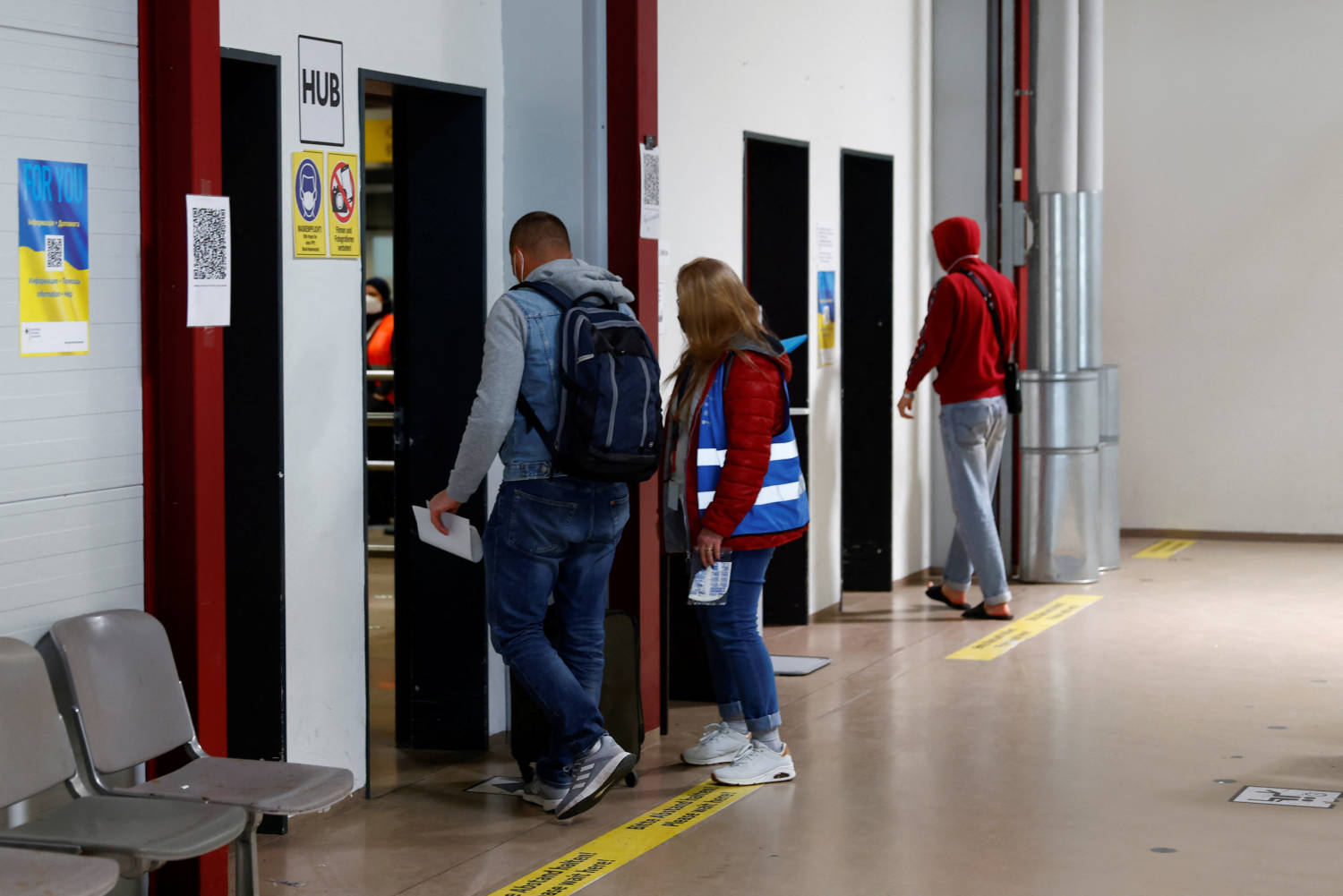By Joanna Gill, Sadiya Ansari and Jade Wilson
Russia’s invasion of Ukraine last year sparked the biggest refugee crisis in Europe since World War Two, but also a wave of solidarity as thousands opened their homes to Ukrainians and EU states gave them rights and benefits akin to their own citizens.
The European Union swiftly granted temporary protection to millions of fleeing Ukrainians, giving them immediate rights to work and access to education, healthcare, welfare and housing, almost the same as local nationals.
Their treatment is in stark contrast to that received by refugees from other warzones, but could provide lessons in how to deal with the contentious issue.
“Temporary protection has been the sleeping beauty of the European asylum legislation,” Sara Consolato, an immigration expert with non-governmental organisation Refugees Welcome Italy, told the Thomson Reuters Foundation.
“The decision to activate, for the first time since its adoption, has been ground-breaking,” she said.
The EU’s never-before-used 2001 Temporary Protection Directive aims to fast-track residency rights by waiving the need to examine applications individually and so avoid major bottlenecks and the possible collapse of asylum systems under the pressure of a mass movement of refugees.
But the measure, while largely hailed as a success, has created a two-tier system, refugee advocates say, in which non-Ukrainian refugees undergo a lengthy asylum application process and endure conditions that often appear designed to deter them from coming to the EU.
Asylum is provided to those not just fleeing war, but also to those experiencing persecution, but that is harder to prove and often leads to lengthy scrutiny.
While asylum regimes differ greatly across the EU, what they have in common is curtailing the rights of applicants for months and sometimes years while their claims are assessed.
IS GEOGRAPHY KEY?
The EU had considered triggering the directive before. Italy and Malta called for it in 2011 when almost 2 million people were displaced as a result of the Arab Spring uprisings.
In 2021, EU Foreign Policy Chief Josep Borrell suggested temporary protection be applied to Afghans fleeing the Taliban takeover of their country.
But some EU countries argued activating temporary protection in these cases might attract more migrants to Europe. It was also hard for EU leaders to agree to trigger the directive when the influx affected some countries and not the bloc as a whole.
When it comes to EU asylum and migration policy, geography weighs heavily on debates. Frontline states such as Italy, Greece and Malta, which see the majority of arrivals, have a different perspective from destination countries, where most asylum seekers want to live, like Austria, Germany or France.
In the case of Ukraine, geography also played a part and its proximity to Europe led to unusual unity within the bloc.

Just six days after the first Russian tanks rolled across the Ukrainian border, the EU triggered the Temporary Protection Directive and it came into force on March 4, 2022.
“It was a bit of a surprise,” said EU lawmaker Birgit Sippel, who works on asylum policy. “This time the war started in our direct neighbourhood, and we saw the need to support the country that was being attacked.”
Ukraine shares a border with four EU countries – Hungary, Poland, Slovakia and Romania. As well as a shared history and culture, Ukraine’s neighbours feared that if Kyiv fell, they would have a new neighbour – Russia.
The shared border meant there was no safe country en route for refugees to shelter, unlike, for example, for Syrians fleeing the civil war and crossing into Turkey.
EXIT STRATEGY
However, the EU’s first use of temporary protection may also be the last. In 2020, well before Russia’s invasion of Ukraine, the bloc proposed repealing the directive, but it has yet to agree on an alternative.
The benefits of swift processing, access to protection and routes to integration via education and employment are elements to consider when reforming asylum rules, experts said.
The ability to apply for jobs right away means many thousands of Ukrainians are in work within the EU, easing the financial cost to member states.
“The humanitarian spirit and solidarity that EU states have shown over the past year or so to refugees fleeing Ukraine should set the example for all refugee crises globally,” said Maeve Patterson, a spokesperson for the United Nations refugee agency.
“The EU can better protect refugees wherever they may come from by ensuring a comprehensive, well-managed and predictable approach to asylum and migration in the EU,” she said.
There are also lessons to be learnt from allowing Ukrainian refugees freedom of movement within the bloc. This means they are able to easily travel to join family, friends or other support networks, rather than being stuck in one place.
The bloc’s Dublin regulation places a greater burden on frontier states by insisting other refugees have to apply for asylum in the first EU country they enter.
They can apply to join immediate family members elsewhere in the EU, but that takes more time and campaigners have accused some governments of blocking such reunifications.
The temporary protection Ukrainians received may also be down to the perception that the protection they needed would be just that – temporary – and the vast majority would return once the war in their country was over.
But as the conflict drags on, more Ukrainians are putting down roots, finding jobs and sending their children to school.
While many hope to return, some already plan to settle. Official surveys of Ukrainian refugees in Germany and Denmark, showed around one-third want to return to Ukraine, one-third plan to stay, and the remaining third is uncertain.
Justyna Frelak of the International Centre for Migration Policy Development think-tank wants to push EU states to develop an “exit strategy” for temporary protection which ends in 2025.
“We have just two years to go, which is absolutely not enough – it’s high time to start preparing for possible scenarios,” she said.
(Reuters)

